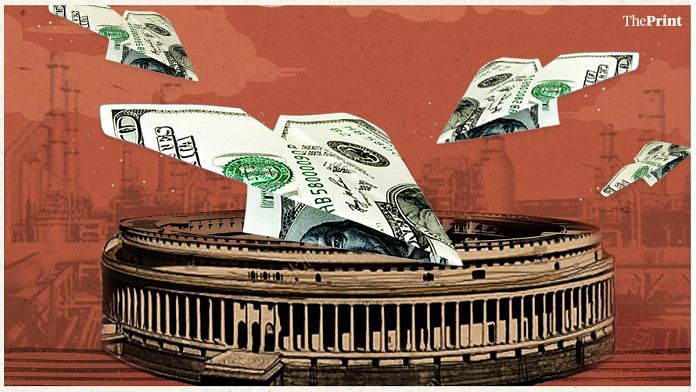The Modi government recently introduced amendments to the Income Tax Act to end retrospective taxation. The amendment seeks to withdraw the demand for tax raised for indirect transfer of Indian assets prior to May 2012. This implies that tax demands made on companies like Cairn Energy and Vodafone will be withdrawn. The amendment also proposes a refund of tax collected from companies if they withdraw cases against the government. A stable and predictable tax regime is necessary to promote private sector investment. The scrapping of the retrospective tax regime will instil confidence of the private investors in India’s regulatory and tax framework.
Retrospective tax regime in India
Retrospective taxation allows the government to pass a law to tax certain products, deals or transactions that happened behind the date on which the law is passed. Countries typically resort to retrospective taxation to fix loopholes in their tax regimes that, in the past, would have allowed companies to take advantage of such loopholes.
The trigger to introduce the retrospective taxation in India was the Vodafone-Hutchison deal in 2007. In May 2007, Vodafone had bought a 67 percent stake in Hutchison. The government raised a tax demand of Rs 7,990 crore in capital gains and withholding tax. Vodafone challenged the demand notice in the Supreme Court. The Supreme Court ruled in favour of the Vodafone group, saying it did not have to pay any taxes for the purchase. To circumvent the Supreme Court’s ruling, the UPA government introduced an amendment through the Finance Act to give powers to tax authorities to retrospectively tax such deals.
Also Read: India’s uncertain growth trajectory makes it tough for RBI to tinker with interest rates
Boost to trade and investment
In recent months, many foreign companies are exiting China due to increased geopolitical tensions and high tariffs imposed by the US government on imports from China. The trade war between the US and China has disrupted the global supply chains, prompting companies to look at newer markets to escape tariffs.
Many American companies are working towards shifting base to Vietnam and other neighbouring countries. In order to compete with these countries, India needs to offer stability in its regulatory regime and rule of law.
Vietnam’s incentives to international firms to set up units to manufacture products can be traced to its multiple free trade agreements (FTAs), which offer lower export costs. While Vietnam has also eased its exchange control restrictions, the key incentive offered to international firms is the prospect of lower tariffs through a number of free trade agreements. For example, prior to the EU-Vietnam FTA, exports from Vietnam to the EU faced tariffs as high as 30 per cent. Post-FTA, these were reduced to zero from August 2020 and gave a big boost to exporters in Vietnam. In contrast to FDI in Vietnam, which is primarily for export-based production, the motivation to invest in India is to serve its big domestic market.
In recent years, the government has taken a series of measures to encourage private sector participation. In 2019, the corporate tax rate for existing companies was reduced to 22 per cent from 30 per cent. For new manufacturing firms, the corporate tax rate was reduced to 15 per cent from 25 per cent. After the corporate tax reduction, India has become a favourable investment destination as its tax rates are in line with taxes in other similarly placed economies. Recently, the government has raised FDI limits in a number of sectors. The FDI limit in the defence manufacturing sector under the automatic route has been raised to 74 per cent from 49 per cent. FDI limit in the insurance sector has also been raised to 74 per cent from 49 per cent. The trade talks between India and the US suffered because of the limited window of foreign investment in Indian insurance. The increase in limits will deepen foreign trade and investment.
Measures taken by the government resulted in an increase in FDI inflows in the country. India attracted the highest-ever total FDI inflow of $81.72 billion in the financial year 2020-21. At a time when global FDI inflows were severely hit due to the pandemic, India was the fifth-largest recipient of FDI inflows in the world in 2020-21.
Also Read: India is walking on one leg because 1991 reforms missed banking & finance
What more could be done?
While a lot has been done to encourage investments, a more welcome approach towards Bilateral Investment Treaties (BITs) would give a further impetus to foreign investments into India. Since the release of the model BIT in 2016, India has signed BITs with a limited number of countries like Brazil, Kyrgyzstan, Belarus etc. Foreign investors sometimes fear that they do not fully understand India or trust the speed of functioning of the court system to get justice. The presence of BITs helps in addressing information asymmetry and creates a framework of checks and balances for foreign investors. For example, hearing at a neutral forum in case of a dispute provides insurance against policy risk and offers more speedy justice.
Ila Patnaik is an economist and a professor at National Institute of Public Finance and Policy.
Radhika Pandey is a consultant at NIPFP.
Views are personal.
Also Read: India needs more private insurance companies. Govt must use Covid trigger to make this happen






